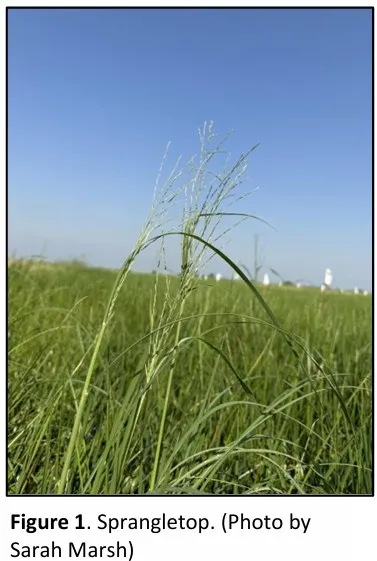The two most problematic species I have been seeing in grower fields this year are sprangletop and, of course, watergrass. The two require slightly different management strategies, which I will elaborate on below.
One of the most important things for planning for the next year, however, is knowing if your field has a resistant weed population. This can help to avoid the use of herbicides that do not control your populations, thus saving time and money in the long run.
Resistance testing
In the next couple of months, as rice starts to flower, many of the weed species will be flowering and going to seed as well. Seeds from populations that are suspected to have resistance should be submitted to the UC Weed Science resistance testing program run by Kassim Al-Khatib, at the Rice Experiment Station. Seeds can also be dropped off at your local UCCE office, with your local Rice Advisor.
To collect seed:
1. Wait until the seeds fall off the panicle or seed head
a. You can see if they are ready by tapping the head, and noting if seeds fall off
b. Do not strip the seed off, as seed that is stripped is not mature
c. Collecting immature seeds will mean that testing cannot be completed, as immature seeds will not germinate.
2. Collect seed into a paper bag
a. Plastic bags will cause seeds to mold and rot, decreasing or inhibiting germination
3. The easiest way to collect is to put the seed head directly into a paper bag and then shake the seed off into the bag.
4. Make sure not to collect on field edges or areas where there may have been a skip or misapplication
5. Collect from multiple plants, to make sure that you have a large and representative sample
a. Insufficient amounts of seed will result in poor test results
6. If you would like help collecting, please call your local farm advisor
a. Whitney: Sutter, Yuba, Placer, Sacramento – (530) 822-7515
b. Luis: Butte, Glenn - (530) 635-6234
c. Sarah: Colusa, Yolo - (530) 987-7501
d. Michelle: San Joaquin - (209) 953-6120
Results from the testing program should be available in February-March of the following year, before you plant your rice. All rice weed species can be tested.

Sprangletop Management
Sprangletop can emerge both under a continuous flood and under flushed conditions (drill-seeded). Plants emerge at higher numbers under flushed conditions than under flooded conditions. Emergence is slower under flooded conditions, so you have to time your herbicide applications to make sure you are controlling it effectively. Making applications that are closer to the 2-3 leaf stage of rice will ensure better control.
Applications made at day of seeding or pre-emergent applications may miss a number of plants that will emerge later.
Active Ingredients that control sprangletop (note: some of these have identified resistance):
- Clomazone (resistance, not widespread)
- Cyhalofop (resistance widespread)
- Benzobicyclon
- Thiobencarb
- Pendimethalin
Watergrass Management
Watergrass species (late watergrass, barnyardgrass, early watergrass, and Walter’s barnyardgrass) are becoming increasingly difficult to control. The key to good grass control is to try to control it early. Most of the yield loss from the grasses is in the first 30 days after planting, due to competition with the rice for nutrients and light. Late applications (clean up applications) are only effective in reducing new seed inputs into the seedbank, but do nothing to address yield loss.
Late watergrass, early watergrass, and Walter’s barnyardgrass all emerge under flooded conditions. Walter’s barnyardgrass is highly competitive, and anecdotally, appears to be causing extremely high yield loss when uncontrolled.
The best strategy to control grass is to mix up the modes of action and chemistries as much as possible, and to make sure to apply in quick succession. For example, applying two into-the-water herbicides at the beginning of the season, and/or using a pre-emergent herbicide will ensure that grass is controlled early, when it matters. Applying multiple chemistries also increases the chances of overcoming the widespread herbicide resistance found in the grasses.
Active Ingredients that control watergrass (note: some of these have identified resistance):
- Clomazone (resistance, not widespread)
- Cyhalofop (resistance, not widespread)
- Benzobicyclon (suppression only)
- Thiobencarb (resistance, widespread)
- Pendimethalin
- Penoxsulam (resistance, widespread)
- Fluorpyrauxifen-benzyl (suppression only)
- Propanil (resistance, widespread)
- Pyraclonil (suppression only)
- Bispyribac-sodium (resistance, widespread)
- Glyphosate (stale seedbed only)
If possible, during the winter, flooding is encouraged, as it increases predation on the watergrass seeds, as well as increasing decomposition of seeds. In really bad fields, low tillage, or no tillage in the fall helps to increase both decomposition and predation over the winter when fields are flooded.


